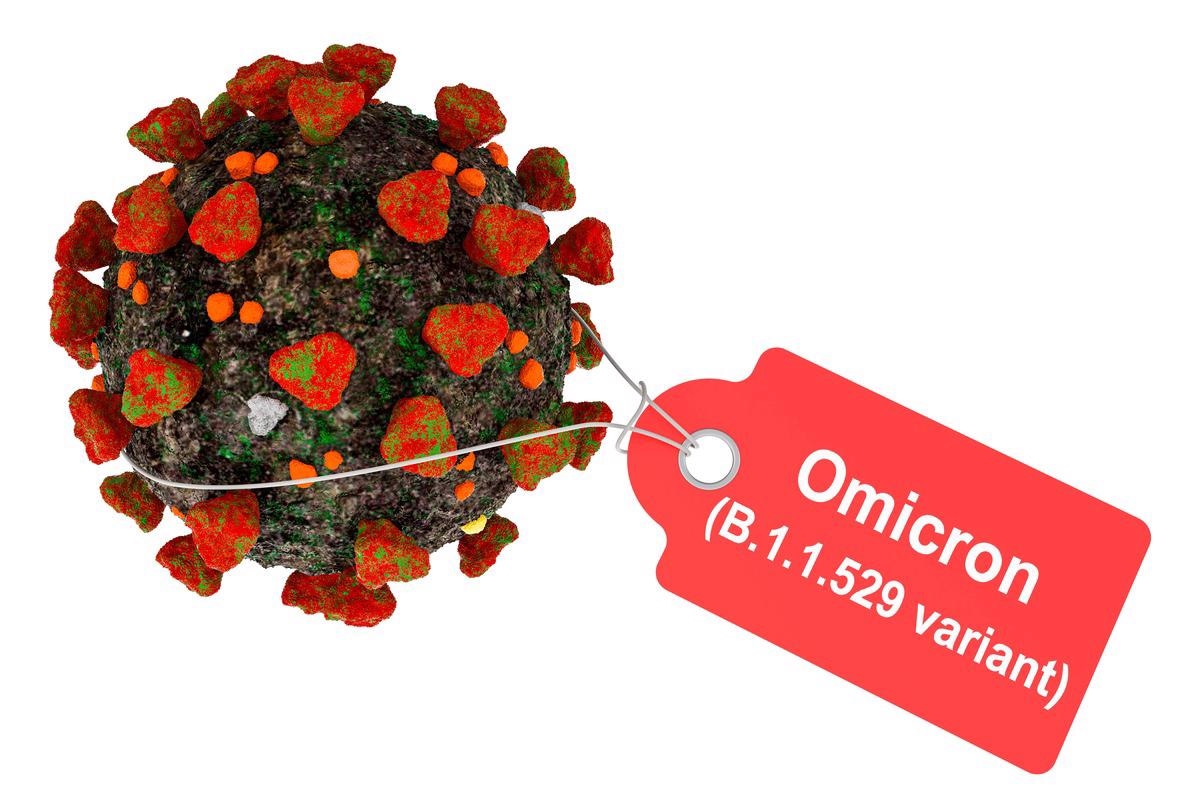The new omicron variant of severe acute respiratory syndrome coronavirus 2 (SARS-CoV-2) is a global cause of concern. A new study aims to explain the evolution of SARS CoV-2 leading to the emergence of the omicron variant using whole genome-based phylogeny and mutational analysis. A preprint version of the study, which is yet to undergo peer review, is available on the bioRxiv* server.
 Study: Mutational cascade of SARS-CoV-2 leading to evolution and emergence of omicron variant. Image Credit: natatravel/Shutterstock
Study: Mutational cascade of SARS-CoV-2 leading to evolution and emergence of omicron variant. Image Credit: natatravel/Shutterstock
About the omicron variant
Omicron is the B.1.1.529 variant. It is a variant of concern (VOC) because it has a higher risk of reinfection. It has led to a resurgence of coronavirus disease 2019 (COVID-19). It was first reported in South Africa on 24th November 2021 from a patient sample collected on 9th November 2021. The World Health Organisation (WHO) assigned omicron as a VOC on 26th November 2021. The omicron variant has been reported from at least 23 countries. Most omicron cases are from Africa and Europe.
Omicron has a high mutation rate with more than 30 mutational changes in the spike protein. These mutations can impact the behavior, spread, and severity of COVID-19 after infection.
Studies are underway to understand if omicron is more transmissible than other variants. All VOCs of SARS-CoV-2 can cause severe disease or death, particularly in vulnerable populations. Therefore, knowledge about the variant and its mutations is essential for formulating prevention strategies. Currently, it is not clear if omicron causes severe disease compared to other variants. However, initial reports from infected university students suggest that infection by the omicron variant causes COVID-19 with a low or mild severity when compared to other VOCs.
It is important to note that this may be because the infected individuals were younger individuals who tend to have milder disease. On the other hand, there were increased hospitalization rates in South Africa. Again, this may be due to increasing overall numbers of individuals being infected, rather than a result of omicron infection.
There is no data to suggest that the symptoms associated with omicron are different from those caused by other variants. Studies are being conducted to assess transmissibility, the severity of infection, symptoms, performance of vaccines and diagnostic tests, and effectiveness of treatments concerning the omicron variant.
Phylogenetic and mutational analyses
In this study, the scientists have examined the mutational profile of different variants until now to investigate the emergence of the omicron variant. They have identified and procured 477 SARS-CoV-2 genomes from the public repository, including 130 genomes of the omicron variant.
They have considered 25 strains from alpha, beta, gamma and delta VOCs and 25 strains from lambda and mu variants of interest (VOI). These genomes were subjected to computational studies for phylogenetic analysis and mutational analysis. The phylogenetic analysis will reveal the closest relative of the omicron variant. The mutational analysis will reveal the changes in the viral genome. This will shed light on the emergence and evolution of the omicron variant.
Common ancestry of lambda and omicron variants
Whole genome-based phylogeny showed two major phylogroups PG-I and PG-II. The original Wuhan-Hu-1, NC_045512.2 reference strain of SARS-CoV-2 was taken as an outgroup. PG-I included VOCs gamma, beta, and delta; the VOI mu and the variant under monitoring (VUM) GH. PG-II included VOCs alpha and omicron and the VOI lambda. However, seven strains of VOC gamma were included in PG-II, two of which are basal to PG-II forming its outgroup, and five were more related to alpha variant.
One of the VUM strains was distant from the main clade of VUM. Notably, two deadly VOCs, delta and omicron, belonged to different phylogroups. Three omicron strains isolated from Italy formed a diversified sub-lineage within the omicron population and one omicron strain from Germany was a diversified omicron strain. Thus, phylogeny depicted that omicron shares a common ancestry with VOI lambda.
Mutations of the omicron variant
In all the genomes analyzed, 24,189 mutations were detected, 18,261 of these were in the omicron genomes. Of these 18,261 mutations, more than 97% were in the coding region and the remaining were in the extragenic region of the genome. Of the coding gene mutations, 2,965 were INDELS (insertions or deletions) while 14,738 were single nucleotide changes constituting 11,995 non-synonymous mutations and 2,743 synonymous mutations.
The spike protein had 10,658 mutations which constitute around 60% of the total mutations in the coding genomic region. The RNA-dependent RNA polymerase had 4,142 mutations. The rest of the coding region had 2903 mutations.
Irrespective of their geographic origin, most of the strains had less than ten mutations representing low intra-strain diversity among omicron strains. Omicron had more than 55 mutations when compared with other VOCs and VOIs. Two strains from Italy and two from South Africa were most diversified among the omicron genomes.
Conclusion
Delta and omicron variants do not share a common ancestry. The omicron variant shares a common ancestry with the VOI lambda. It has evolved mainly because of non-synonymous mutations.
*Important notice
bioRxiv publishes preliminary scientific reports that are not peer-reviewed and, therefore, should not be regarded as conclusive, guide clinical practice/health-related behavior, or treated as established information.
- Bansal, K., & Kumar, S. (2021). Mutational cascade of SARS-CoV-2 leading to evolution and emergence of omicron variant. bioRxiv. doi: https://doi.org/10.1101/2021.12.06.471389 https://www.biorxiv.org/content/10.1101/2021.12.06.471389v1
- Update on Omicron. (2021). Retrieved December 9, 2021, from https://www.who.int/news/item/28-11-2021-update-on-omicron
Posted in: Medical Science News | Medical Research News | Disease/Infection News
Tags: Coding Region, Coronavirus, Coronavirus Disease COVID-19, Diagnostic, Evolution, Gene, Genome, Genomic, Mutation, Nucleotide, Phylogeny, Polymerase, Protein, Respiratory, RNA, SARS, SARS-CoV-2, Severe Acute Respiratory, Severe Acute Respiratory Syndrome, Spike Protein, students, Syndrome

Written by
Dr. Shital Sarah Ahaley
Dr. Shital Sarah Ahaley is a medical writer. She completed her Bachelor's and Master's degree in Microbiology at the University of Pune. She then completed her Ph.D. at the Indian Institute of Science, Bengaluru where she studied muscle development and muscle diseases. After her Ph.D., she worked at the Indian Institute of Science, Education, and Research, Pune as a post-doctoral fellow. She then acquired and executed an independent grant from the DBT-Wellcome Trust India Alliance as an Early Career Fellow. Her work focused on RNA binding proteins and Hedgehog signaling.
Source: Read Full Article
